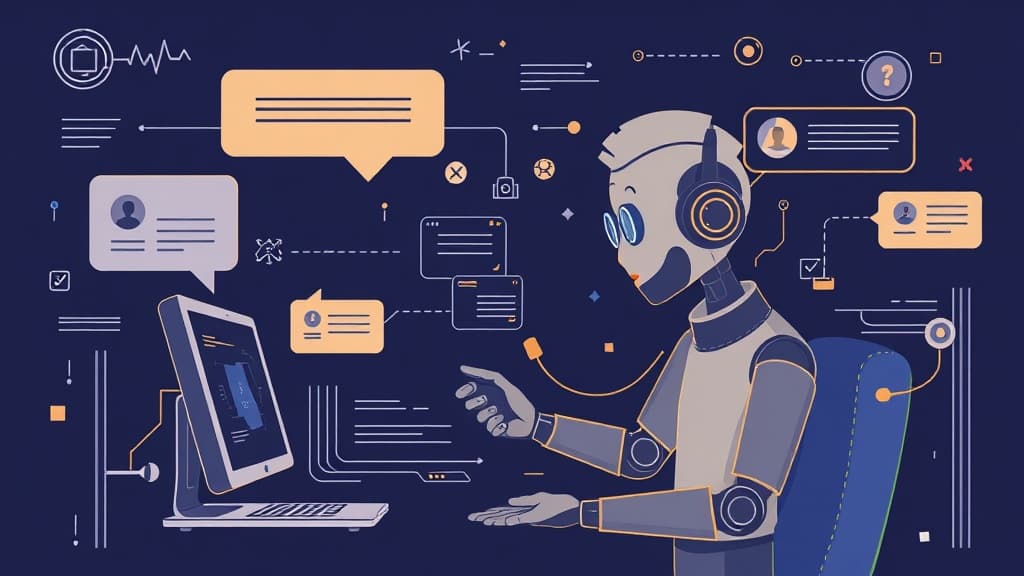Claude 4: Revolutionizing Conversational AI Interactions

Claude 4: Revolutionizing Conversational AI Interactions
Have you ever chatted with a bot that actually seemed to get you? I mean, like it understood your mood, your quirks, and maybe even your sense of humor? Well, as of October 2025, Claude 4 by Anthropic is making that kind of interaction not just a dream but a reality. This powerful conversational AI is stepping up the game in a big way, and I’m here to break down what makes it so special.
What’s New with Claude 4?
First off, if you’re not familiar with Claude 4, it’s a conversational AI model developed to improve how we interact with machines. As of now, Claude 4 is running on version 4.2, boasting over 200 billion parameters. That’s right—billion with a ‘b’! The model’s transformer architecture has been fine-tuned to handle complex language patterns and sustain context over longer conversations. What’s pretty cool is that it can remember past chats and user preferences, making interactions feel much more natural.
Contextual Awareness: A Game Changer
One of the standout features of Claude 4 is its contextual awareness. Imagine having a digital assistant that remembers that you prefer concise answers or that you’re a fan of sci-fi movies. It’s not just about regurgitating information; it’s about creating a personalized experience.
In my experience, this capability is vital, especially in customer service applications. When you reach out to a brand, you don’t want to explain your issue from scratch every time you chat. With Claude 4, it can recall previous conversations, making the entire interaction smoother. As a developer, integrating this kind of contextual memory into your applications can drastically enhance user satisfaction.
Nuanced Dialogue: Understanding the Subtleties
Another area where Claude 4 shines is its nuanced dialogue capabilities. You know how sometimes you throw in a sarcastic comment or a joke, and the bot just stares back blankly? Well, that’s history with Claude 4. It can grasp subtleties in language, such as sarcasm and emotional tone, which is essential for creating meaningful interactions.
For example, if a user makes a joke about their coffee being "strong enough to wake the dead,” Claude 4 can respond with something witty instead of just providing a bland reply about caffeine. That kind of responsiveness can transform user experience, especially in areas like mental health apps, where understanding emotional cues is critical.
Integration and API Enhancements
Now, let's talk about the practical side—API enhancements. Just last quarter, Anthropic released updates to the Claude API that make it even easier for developers like us to integrate this powerful tool into our projects. The new features include improved session management and customizable memory settings. You can dictate how long the conversation context is retained, allowing for more tailored interactions.
Here’s a quick code snippet to showcase how you can chat with Claude 4 using the latest API:
import requests
API_KEY = 'your_api_key_here'
API_URL = 'https://api.anthropic.com/v1/claude'
headers = {
'Authorization': f'Bearer {API_KEY}',
'Content-Type': 'application/json'
}
def chat_with_claude(prompt, context=None):
data = {
'model': 'claude-4.2',
'prompt': prompt,
'context': context,
'max_tokens': 150,
'temperature': 0.7
}
response = requests.post(API_URL, headers=headers, json=data)
if response.status_code == 200:
return response.json()['choices'][0]['text']
else:
return f"Error: {response.status_code} - {response.text}"
# Example usage
user_context = "User prefers concise answers."
user_input = "Can you explain the benefits of using Claude 4 in customer service?"
response = chat_with_claude(user_input, context=user_context)
print(response)
Feel free to tweak the parameters, like max_tokens and temperature, to get the desired style and depth of responses. It’s straightforward, and once you get the hang of it, the possibilities are endless!
Real-World Applications: Where Claude 4 Shines
Now, let’s dive into some real-world applications. The versatility of Claude 4 is impressive and spans various sectors.
-
Customer Support: Companies are deploying Claude 4 in chatbots to handle customer inquiries. By remembering previous interactions, these bots can provide personalized assistance, reducing the need for repetitive explanations.
-
Mental Health Apps: On a more sensitive note, mental health applications are leveraging its nuanced dialogue capabilities to create supportive environments. These apps can initiate conversations that feel genuine, helping users feel more comfortable sharing their thoughts.
-
Education: Educational platforms are using Claude 4 to enhance tutoring services. Imagine a student being able to ask questions and receive answers that adjust based on their learning style and history. Super cool, right?
-
Content Creation: For content creators, Claude 4 can be a game changer. From generating ideas to drafting and editing text, it can help content flow more naturally while maintaining contextual continuity.
-
Gaming: Game developers are also getting creative. By integrating Claude 4 for NPC dialogues, players can have more immersive interactions, making the gaming experience feel alive and dynamic.
Conclusion: The Future of Conversational AI
As we wrap this up, it’s clear that Claude 4 is not just another step in AI development; it’s a leap. Its capabilities in maintaining context, understanding nuances, and integrating seamlessly into various applications are setting new standards in conversational AI.
Whether you’re building a customer service bot, a mental health resource, or even interactive educational tools, Claude 4 has something to offer. The potential to improve user experience through personalized, human-like conversations is enormous, and I can’t wait to see how developers like you and me continue to push boundaries in this exciting field.
So, if you haven’t already, dive into Claude 4. Experiment, play around with the API, and see how you can leverage its features to create engaging, meaningful interactions. Who knows? You might just build the next big thing in conversational AI. Happy coding!
